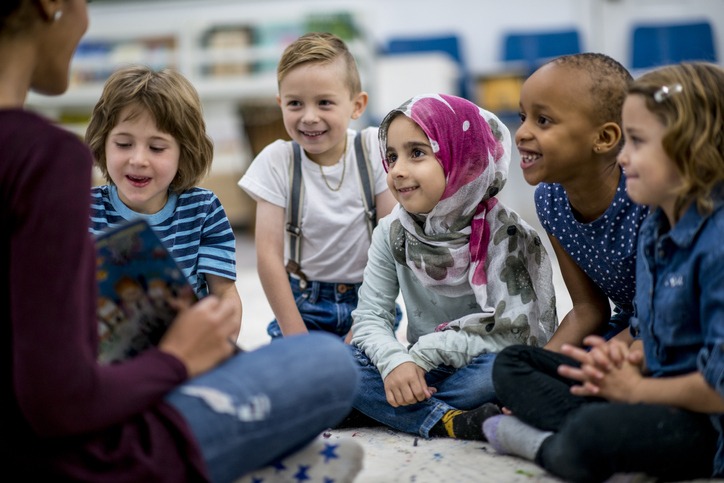The term ‘cultural diversity’ is no longer a shallow term thrown around by people who want to sound politically correct. Ever since racial segregation in American public schools became illegal, cultural diversity in the classroom began to rise gradually.
In 2014, most students in public schools represented racial minority groups, and this trend is expected to continue in the coming years. Therefore, it has become increasingly important for educators and schools across the globe to embrace diversity and cultural inclusion in classrooms, even in elementary schools.
But why is it important to make cultural diversity and awareness an integral part of the educational system? Let’s find out.
Benefits of cultural diversity in the classroom
Embracing cultural, ethnic, and socio-economic diversity in the classroom leads to positive learning outcomes. In the long run, these positive outcomes could also have a life-changing impact on the students involved.
Below are some of the benefits of diversity and cultural awareness in the classroom.

It promotes empathy
Unbeknownst to many students, they may display discriminatory and prejudiced attitudes toward social groups and cultures different from theirs. More often than not, this prejudice stems from living in racially closeted environments or family backgrounds.
However, teaching and exposing students to cultural diversity helps them eliminate these stereotypes and discriminatory attitudes. When they understand various cultures, they tend to be more empathetic toward the experiences and realities that other people face. This way, they can express sensitivity when dealing with other students from different social groups and backgrounds.
It prepares students for adulthood
Childhood and teenage years offer a form of shield from reality. When students eventually transition into adulthood, they meet a whole new, unfamiliar world of diversity that can be overwhelming.
In the corporate world, they are faced with a diverse workforce much different from what they may be used to. Consequently, blending into such a diverse workforce and interacting with people with varying backgrounds and mindsets may be too difficult for them to handle.
However, when students are introduced to diversity during their formative years, this transition will not be a challenge. They will assimilate the appropriate interaction skills needed to cope in professional fields. They will also become gems in the corporate world as most modern companies recruit only socially aware candidates.
It improves critical thinking skills
The presence of diversity in classrooms helps students to see beyond just one narrow-minded perspective. When exposed to viewpoints that vary from theirs, students can take a step back to analyze and critically examine the world from different angles. This way, their mode of thinking alters, and they begin to view the world from beyond their bubble.
In the long run, these individuals will drop any close-minded viewpoint they may already hold and become more open-minded.
It helps to create a culturally sensitive and responsive learning environment
“We mock that which we don’t understand, and then we get to experience it ourselves.”
This quote by Sarah Gerdes is still relevant, especially in relation to how humans react to different viewpoints or backgrounds within their immediate environment. In most cases, unfamiliar views, experiences, and traditions are met with scorn or outright dismissal. Although this is a common human behavior, it has no place in today’s multicultural society.
Alternatively, teaching diversity and awareness in classrooms can open students’ eyes to cultures that are different from theirs. Subsequently, it creates an environment where students are more respectful of other groups and viewpoints regardless of how different they may seem.

How to encourage diversity in your classroom
Teachers and school management systems can foster cultural awareness and diversity in the classroom in several ways. These include:
- Incorporating diversity in the curriculum
If you’re trying to encourage diversity in the classroom, a culturally diverse curriculum should be the first stepping stone. You should make a concerted effort to broaden your curriculum and represent diversity in your lesson plan.
For instance, most history classes in the past have focused on just American history or western-centric topics. To encourage diversity, include other cultures from different parts of the world in the lesson. This way, students from minority groups and cultures will not feel excluded or marginalized.
- Acknowledging differences
When teaching, it’s important to acknowledge and respect your students’ diverse backgrounds. You may find yourself in a situation where you have to adjust your teaching methods to suit cultural differences amongst students.
What may be relatable and understandable for student A might be alien to student B due to cultural differences.
For instance, let’s assume you ask students to write a paper on the new pay for essays online trend in the academic world. International students from countries where essay writing services are not popular might find this task strange or overwhelming. As such, you will need to make concessions and adjustments to ensure that you carry every student along.
- Practicing and taking an interest in cultural sensitivity
You can encourage diversity in the classroom by expressing your desire to become more culturally sensitive and aware. Ask genuine questions about your students’ cultural nuances and beliefs. You could also ask them to share their experiences.
However, it’s important to draw a firm line between the genuine celebration of cultures and cultural appropriation. This way, you can ensure that you don’t disrespect your students in the quest for inclusion and awareness.
Final thoughts
The benefits of encouraging cultural diversity and awareness in the classroom are far too numerous to count. Not only does it equip students with the right intellectual skills needed to cope in a multicultural society, but it also improves their emotional intelligence.
For teachers and educators who aren’t sure how to encourage diversity in their classrooms, expressing a genuine desire to learn is a great way to start. This way, more students will share their experiences and help you develop the right strategies for inclusion and raising awareness.



